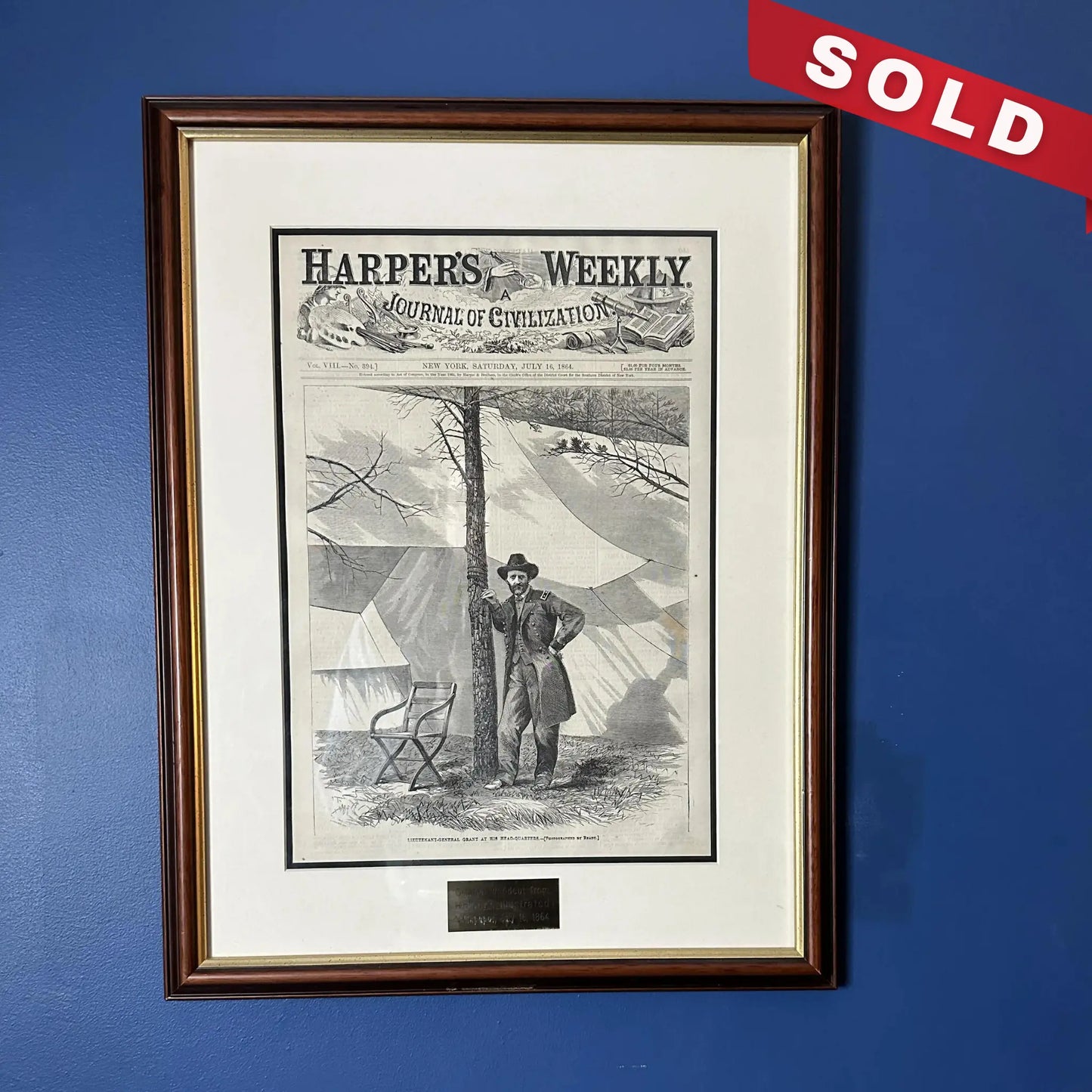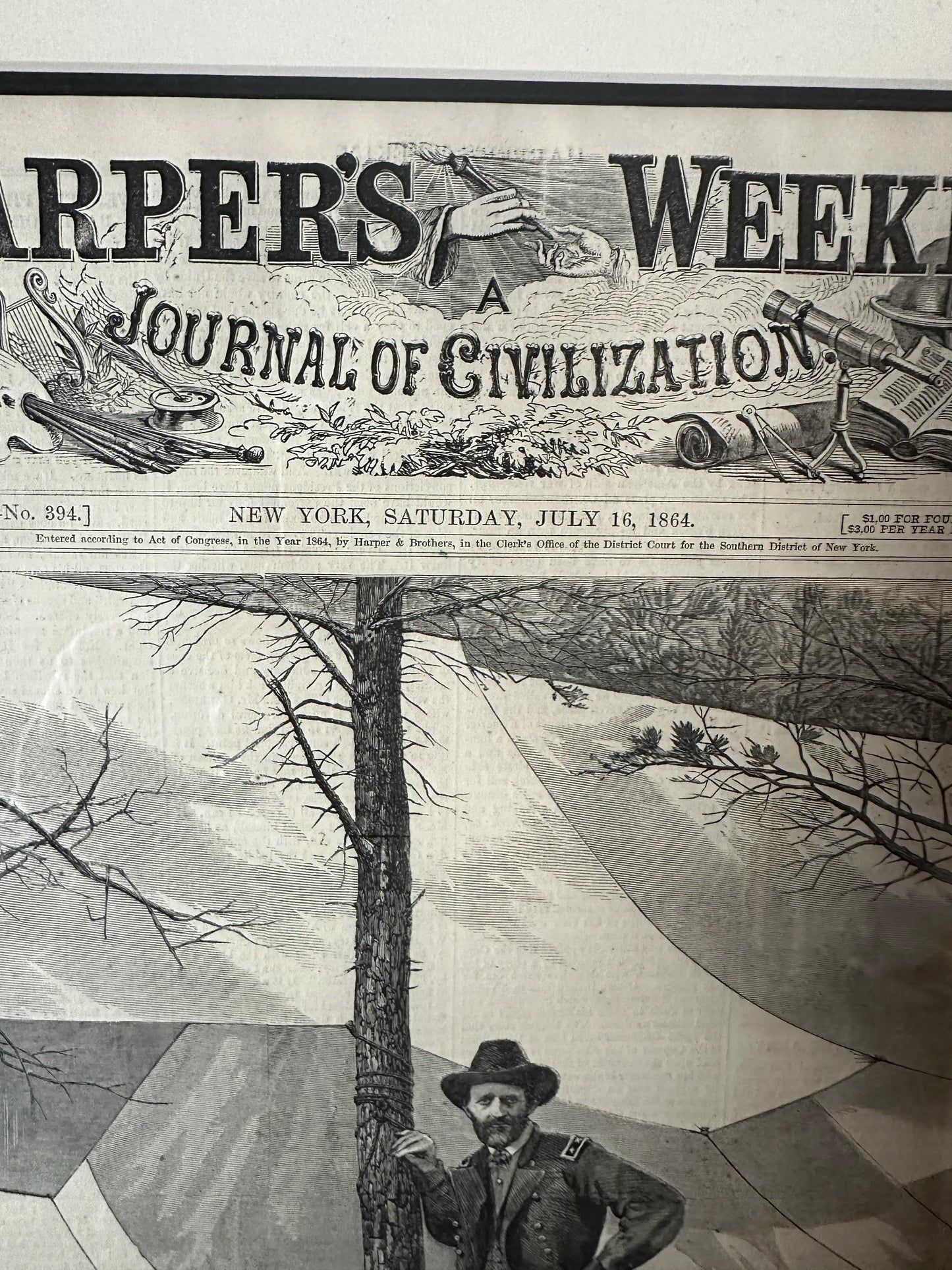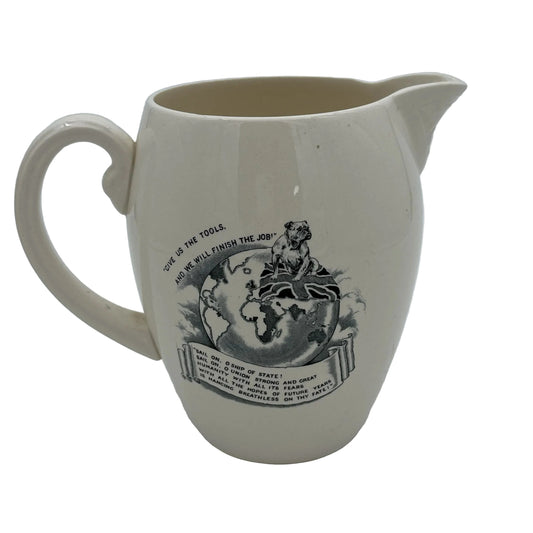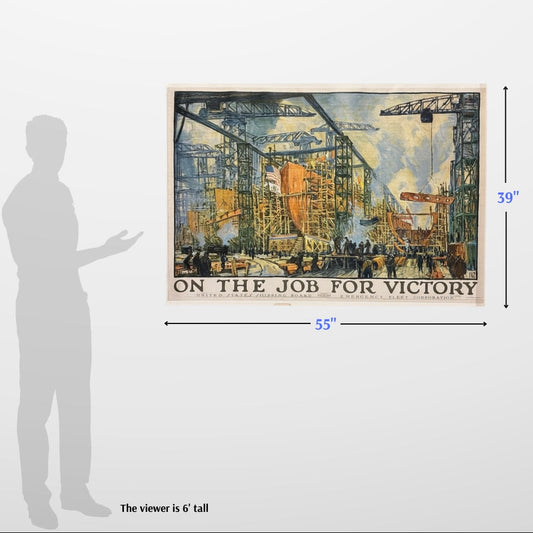Grant at his Headquarters on the cover of "Harper's Weekly" for July 16, 1864
Grant at his Headquarters on the cover of "Harper's Weekly" for July 16, 1864
Updated February 8 at 9:10 pm Eastern: This is now sold.
The remarkable thing about this cover of "Harper's Weekly" for July 16, 1864 is its like-new condition. Nicely framed and ready to hang.
Note that we did not re-frame this, so it doesn't use the same UV-protecting, non-glare acrylic that we use, so you'll want to be sure and hang it someplace where the sun won't shine on it.
— Lee Wright | Founder
Here's the description from The Met:
"Ulysses S. Grant, general-in-chief of the Union armies, is shown at his Cold Harbor, Virginia headquarters in June 1864. At this time he was directing the Overland Campaign and, despite heavy losses, maneuvering his forces close to Petersburg. An eight-month siege would follow, resulting in the fall of the latter city, the taking of the capital of Richmond, then General Robert E. Lee’s surrender.
Based on a photograph by Mathew Brady, this portrait conveys dogged determination and a sense of personal isolation."
The Library of Congress has the original negative.
Size of image: 15" × 10.5"
Size of frame: 21.5" x 16.5"
Historical background on Harper's Civil War images
"The process started by the deployment of not only reporters but also artists to the battlefield. Some of the most renowned artists of the 1800’s got their start as illustrators for Harper’s Weekly, including Winslow Homer and Thomas Nast. These artists would sketch scenes of the battles that they witnessed and the sketches would then be dispatched back to Harper’s for publication in the upcoming papers.
In order to publish the artwork, the images first had to be carved onto a block of wood. But it would take too much time for a single engraver to carve an entire print, particularly given the timeliness of each issue. To provide the illustrations as quickly as possible, a very clever idea was developed. The illustration would be cut into 2 inch squares and each square would be engraved onto a different small block of wood by an assigned carver.
"By dividing the illustration up, each artist assigned to just a portion, a team of workers could carve a full page illustration in a short period of time. After the small blocks were completed they were then screwed together to form the overall illustration and a finishing engraver would provide final touches to be sure the pieces were perfectly aligned. This completed wood block was then used as a “master” to stamp the illustration onto all the newspapers being printed. If you look at a Harper’s engraving carefully you can often see where the blocks of wood were joined together.
"It wasn’t until the 1890’s that the technology of printing caused the end of hand-done engravings for the pages of Harper’s and other illustrated periodicals. With the demise of this labor-intensive trade also came the end of some of the more beautiful works of art to be found on paper. They remain treasures today and hearken back to an era when artistry and long hours of work were an important part in providing the news."
Source: Timothy Hughes Rare & Early Newspapers
Made by America
Made by America
Almost all of the new products we offer are designed by us and made in America and most of our Rare Finds were made in America.
Our original designs are based on our nation’s history and our love of American history. Read more about other things we've created, including The History List, History Camp, and The Pursuit of History, in addition to The History List Store.
Every product that is made in America states that in the product description and includes the "Made in U.S.A." graphic.





New in Rare Finds this week
-
WWII Red Cross Posters
"yes"
Sold out -
Sold out





































